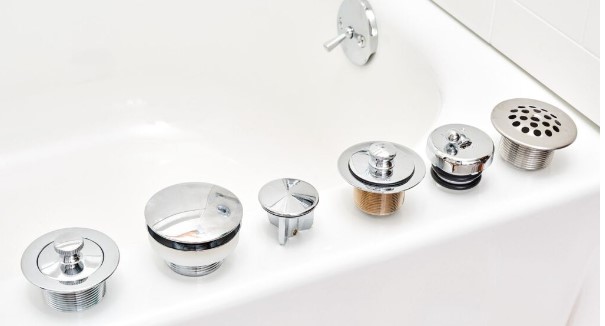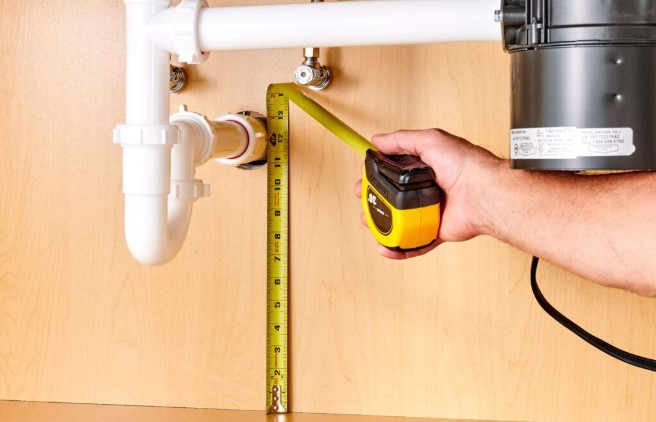When it comes to home plumbing, one of the most crucial aspects is understanding the size of your sink drain. Whether you’re replacing a sink, upgrading your plumbing fixtures, or troubleshooting a leak, knowing the correct sink drain size is essential.
This knowledge helps ensure compatibility with various sink components, prevents leaks, and complies with UK plumbing regulations.
In this article, we’ll guide you through the process of measuring sink drain sizes in the UK, including the tools you’ll need, the terminology involved, and step-by-step instructions.
Why Measuring Sink Drain Size is Important
Measuring your sink drain size is more than just a matter of convenience; it’s a vital step in maintaining a functional plumbing system. The right measurements ensure that:
- Compatibility with Sink Components: If you’re installing a new sink or replacing existing plumbing, accurate measurements help ensure that everything fits properly, including pipes, plugs, and strainers.
- Avoiding Leaks or Fitting Issues: An incorrect size can lead to poor fittings, which may result in leaks. Leaks can cause water damage and mold, leading to costly repairs.
- Compliance with UK Standards: The UK has specific plumbing regulations and standards. Knowing your sink drain size ensures you adhere to these guidelines, which is crucial for safety and functionality.
Tools Needed for Measuring a Sink Drain
Before you begin measuring, gather the necessary tools. Here’s what you’ll need:
- Tape Measure or Ruler: A flexible tape measure is ideal for getting around curves and corners.
- Vernier Calipers (optional): If you require more precise measurements, especially for small diameters, calipers can be beneficial.
- Notepad or Phone: Keep track of your measurements to avoid confusion later.
Understanding Sink Drain Terminology in the UK
Before diving into the measurement process, it’s important to understand some key terms that are commonly used when discussing sink drains:
- Sink Waste Hole: This is the opening at the bottom of the sink where wastewater exits.
- Plug Hole Diameter: This refers to the size of the hole that accommodates the sink plug.
- Waste Pipe and Trap Size: The diameter of the pipe that carries wastewater away from the sink, usually referred to in millimeters (mm) in the UK.
- Overflow System: Many sinks have an overflow system to prevent water from spilling over the edge. Understanding how this works is important for measurements.
Step-by-Step Guide to Measure Sink Drain Size
Step 1: Measure the Diameter of the Plug Hole
- Remove any plug or strainer: Start by taking out the plug or strainer from the sink drain. This will give you clear access to the waste hole.
- Use a Tape Measure: Insert the tape measure into the hole and measure the internal diameter. Ensure you measure from the widest point across the circular opening.
- Common UK Plug Hole Sizes: In the UK, typical plug hole sizes are 1.25 inches (32mm) or 1.5 inches (40mm). Knowing your measurement will help you select the correct plug or strainer later.

Image source: dreamhomemaking.com
Step 2: Measure the Waste Pipe Size
- Locate the Waste Pipe: Underneath the sink, you’ll find the waste pipe that connects the sink drain to the plumbing system.
- Measure the Diameter: Use your tape measure to measure the diameter of the waste pipe. This can typically be 32mm, 40mm, or 50mm in the UK.
- Consider Pipe Fittings: Check the fittings at the joints. They should be compatible with the diameter of your waste pipe. If you’re unsure, take the measurement to a local plumbing supplier for assistance.

Image source: dreamhomemaking.com
Step 3: Measure the Overflow System (if applicable)
- Identify the Overflow Hole: Many sinks, especially bathroom models, have an overflow hole located at the back of the basin.
- Measure the Diameter: Similar to measuring the plug hole, measure the diameter of the overflow hole. This ensures you have the correct fitting if you ever need to replace or repair the overflow system.
- Check Compatibility: If you’re considering a new sink, ensure that the overflow system matches the existing plumbing setup to avoid any complications.

Image source: paradigmplumbing.com
Common Sink Drain Sizes in the UK
Understanding common sink drain sizes can help you make informed decisions:
- Bathroom Sinks: Typically have a plug hole size of 1.25 inches (32mm) and a waste pipe size of 32mm. Some larger bathroom sinks may use a 1.5-inch (40mm) waste pipe.
- Kitchen Sinks: Often feature a larger plug hole size of 1.5 inches (40mm) with a waste pipe size of either 40mm or 50mm. The larger diameter helps accommodate higher water flow.
- Utility Sinks: These sinks can vary widely but usually have a waste pipe size of 40mm or larger to handle heavy use.
Knowing these sizes can save you time and trouble when selecting new fittings or troubleshooting issues.
Additional Considerations
- Materials of Sink Drains: Drains come in various materials, including chrome, stainless steel, and plastic. Each material has its advantages and disadvantages, so consider which is best for your needs.
- Selecting the Right Fittings: Make sure the fittings (such as traps and adapters) you select are made from compatible materials and sizes for the sink drain you have. This helps in ensuring a secure and leak-free installation.
- Local Regulations: Be aware of any local building codes or plumbing regulations that may affect your sink installation. Compliance ensures safety and can prevent issues down the line.
Conclusion
Measuring your sink drain size in the UK is a straightforward process that can save you from costly mistakes and repairs. By following the steps outlined above, you can ensure compatibility with your plumbing fixtures, avoid leaks, and adhere to UK standards.
Remember to double-check your measurements before purchasing new components, and don’t hesitate to consult with a professional if you’re uncertain about any aspect of your plumbing system.
Frequently Asked Questions (FAQs)
To determine your sink drain size, remove the plug or strainer and measure the diameter of the waste hole using a tape measure. Common sizes in the UK are typically 1.25 inches (32mm) or 1.5 inches (40mm).
In the UK, standard sink drain sizes are usually 1.25 inches (32mm) for bathroom sinks and 1.5 inches (40mm) for kitchen sinks. Waste pipe sizes commonly range from 32mm to 50mm.
To measure the sink plug size, remove the plug from the drain and measure the diameter of the hole it fits into. Use a tape measure for accuracy, noting that common sizes are 32mm and 40mm.
To measure the sink waste size, locate the waste pipe beneath the sink and measure its diameter with a tape measure. Typical waste pipe sizes in the UK are 32mm, 40mm, and 50mm, depending on the type of sink.
